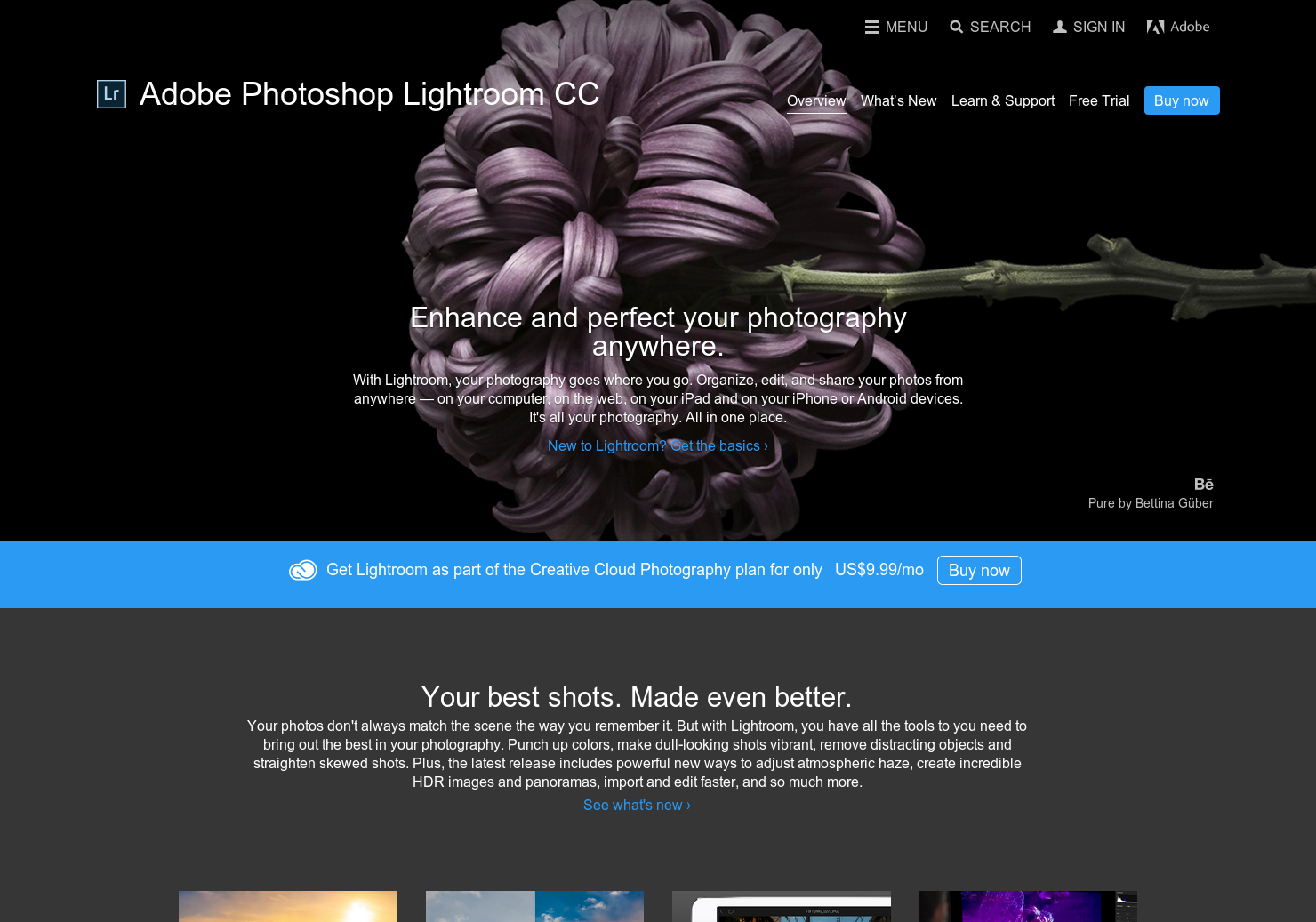- Below are some real-world examples comparing Lightroom 2.5 with Lightroom 3.6. Both are using the same original RAW file (in this case, a Nikon NEF). Both are using exactly the same develop and export settings.
- For PCs, it’s Windows 7 or above. Adobe Lightroom 6/CC 2015 Updates. If you’d also like the direct download links for the individual Lightroom 6 / CC 2015 product updates (i.e., all of the included changes since the initial version above), Adobe has issued these as patches to the base release. We have complete sets available here, including.
The trick here is to type “Lightroom 6” in the search dialog – that’s when Adobe will finally display the Photoshop Lightroom 6 buying option: How to Upgrade to Lightroom 6. From there, clicking the “Buy now” link will take you to the page where you can buy Lightroom 6 from. Lightroom 6 is no longer supported by Adobe. While I’ve tried to emphasize what you will gain by upgrading to Lightroom Classic CC in the rest of the article, there’s no getting away from the fact that Lightroom 6 is no longer supported by Adobe. As a result, new features added to Lightroom Classic CC won’t be available to Lightroom 6.
- by David Coleman
- Last Modified: February 2, 2020
- Filed Under: Develop Module
- Tagged With: Lightroom 3
I’ve always mostly avoided using Lightroom’s recovery tool. The concept is promising–it helps recover details in image highlights–but I’ve usually been disappointed with the side effects. What I’ve found particularly frustrating is the pink color shift that it’s always seemed to add, something that discolors whites and makes blue skies more purple. It’s a bit like adding a red shirt with the washing. And while it’s possible to correct with something like Nik’s Viveza, that’s not exactly an elegant solution–it adds more steps and more hassle and is hard to get consistent results. And so I’ve generally avoided using the recovery tool altogether, or, if I really have to use it, using it with a very light touch.
Until now, that is. The most recent versions of Lightroom have a much improved recovery tool. The color shift side effects are now pretty much gone, making it a much more useful tool. And it means that the advice to ‘expose to the right right’ by slightly overexposing the image in order to take advantage of the mathematics of digital capture makes much more sense (in short, there’s more image data in the lighter end of the spectrum (or right on the histogram) than in the darker end (or left), so if you expose for that you can maximize the signal to noise ratio; here’s a more detailed discussion).


Below are some real-world examples comparing Lightroom 2.5 with Lightroom 3.6. Both are using the same original RAW file (in this case, a Nikon NEF). Both are using exactly the same develop and export settings. For each set, the only change is in the recovery tool–all the other settings remain the same.
You can see that in the Lightroom 2.5 versions, there’s a definite color shift that’s very noticeable in the sky changing color. In the Lightroom 3.6 versions, the highlight recovery is much more neutral (and much more usable). I’ve also included the histograms at each setting so you can see what effect the recovery tool is having on that at those settings. And while I generally would never push it to 100 in actual use, even at that extreme the results are very usable. And it’s also a promising sign for Lightroom 4, which will have develop tools that are better yet.
The Recovery Tool in Lightroom 3.6
| Recovery 0 | Recovery 30 | Recovery 100 |
The Recovery Tool in Lightroom 2.5
| Recovery 0 | Recovery 30 | Recovery 100 |
A Partial Workaround for Earlier Versions of Lightroom
If upgrading isn’t on the cards for you right now, there are some things you can try to reduce the effect. Your best bet is to try to reduce the exposure first (drag the exposure marker to the left), then use the shadows and brightness sliders to bring back some detail in the shadows. The risk with that, though, is that you can easily introduce noise in the shadows.
More Lightroom Tips & Tricks:

/article-new/2015/10/adobelightroom-800x704.jpg?lossy)
- Deliver and maintain services, like tracking outages and protecting against spam, fraud, and abuse
- Measure audience engagement and site statistics to understand how our services are used
Lightroom 6 Serial Number
If you agree, we’ll also use cookies and data to:- Improve the quality of our services and develop new ones
- Deliver and measure the effectiveness of ads
- Show personalized content, depending on your settings
- Show personalized or generic ads, depending on your settings, on Google and across the web

Lightroom 6 Standalone
Click “Customize” to review options, including controls to reject the use of cookies for personalization and information about browser-level controls to reject some or all cookies for other uses. You can also visit g.co/privacytools anytime.